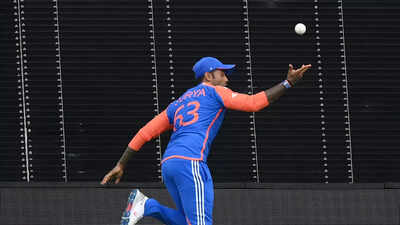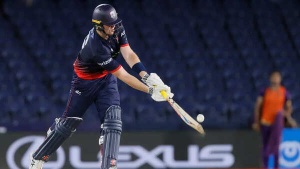The International Cricket Council (ICC) has unveiled a series of significant adjustments to the playing conditions across Test, ODI, and T20I formats. The changes address key areas such as over rates, ball management, boundary catches, concussion protocols, and wide ball rulings.
 *Image credit: ICC*
*Image credit: ICC*
To combat slow over rates, the stop clock rule, previously tested in white-ball cricket, will now be implemented permanently in Test matches. A new over must commence within 60 seconds of the completion of the previous one. Teams will be given two warnings per innings, with subsequent violations incurring a five-run penalty. These warnings will reset after every 80 overs, coinciding with the availability of a new ball.
In One Day Internationals (ODIs), the use of two balls will be restricted to the first 34 overs. For the remaining 16 overs, the fielding side will have the option to select one of the two balls for continued use. This adjustment is designed to better manage the wear and tear of the ball.
A fielder making airborne contact with the ball beyond the boundary must now land completely within the field of play to constitute a valid catch. Should they step outside the boundary and jump again, only one additional touch is permitted before landing inside the boundary.
Teams will be mandated to pre-nominate concussion substitutes. Any player diagnosed with a concussion will be required to undergo a mandatory seven-day rest period before being cleared to return to competitive play.
A revised wide ball rule will be trialled in white-ball formats. The batter's position at the moment of delivery – not after any subsequent movement – will determine whether a delivery is deemed a wide. Deliveries passing between the leg stump and the extended protected area marker at the popping crease will no longer be called wide. However, balls passing behind the batter's legs may still be called wide. To aid umpires, the protected area marker will now extend to the popping crease, providing a clear visual reference.
The Decision Review System (DRS) will now utilize the actual physical outline of the stumps and bails to define the wicket zone, thereby increasing the accuracy of LBW (leg before wicket) decisions.
In addition to the existing five-run penalty for a deliberate short run, the fielding team will now have the prerogative to choose which batter takes strike for the subsequent delivery.
In domestic first-class cricket, a player who sustains a serious on-field injury at any point after the match commences (including during warm-ups) can be replaced by a like-for-like player for the remainder of the game.
The new Test playing conditions came into effect from the Sri Lanka vs Bangladesh Test on June 17. The updated ODI and T20I rules will be implemented from the same series, commencing with the first ODI on July 2 and the T20Is from July 10. All international matches following these dates will be played under the revised regulations.
Newer articles
Older articles
 Smith Eyes Grenada Test Return After Injury Recovery
Smith Eyes Grenada Test Return After Injury Recovery
 Google Maps Boosts Navigation Precision with Fused Orientation Provider Update
Google Maps Boosts Navigation Precision with Fused Orientation Provider Update
 Earth Sciences Minister Rijiju Expresses Frustration Over Atos Supercomputer Delay, Jeopardizing Weather Forecast Upgrades
Earth Sciences Minister Rijiju Expresses Frustration Over Atos Supercomputer Delay, Jeopardizing Weather Forecast Upgrades
 Washington Freedom Snatch Last-Ball Win Over Knight Riders in MLC Thriller; Playoff Hopes Soar
Washington Freedom Snatch Last-Ball Win Over Knight Riders in MLC Thriller; Playoff Hopes Soar
 East Africa Rift: Mantle Upwelling Drives Birth of New Ocean, Study Finds
East Africa Rift: Mantle Upwelling Drives Birth of New Ocean, Study Finds
 Colon Cancer: Don't Ignore These 5 Subtle Warning Signs
Colon Cancer: Don't Ignore These 5 Subtle Warning Signs
 Prasidh Krishna Vows to Sharpen Bowling After Costly Leeds Performance
Prasidh Krishna Vows to Sharpen Bowling After Costly Leeds Performance
 Gavaskar Urges India to Replace Thakur with Yadav for Second Test Against England
Gavaskar Urges India to Replace Thakur with Yadav for Second Test Against England
 Rishabh Pant's Unconventional Batting Style Is Revolutionizing Cricket, Says Greg Chappell
Rishabh Pant's Unconventional Batting Style Is Revolutionizing Cricket, Says Greg Chappell
 Vitamin B12 Deficiency: Cardiologist Explains Symptoms, Sources, and Why You're Always Tired
Vitamin B12 Deficiency: Cardiologist Explains Symptoms, Sources, and Why You're Always Tired